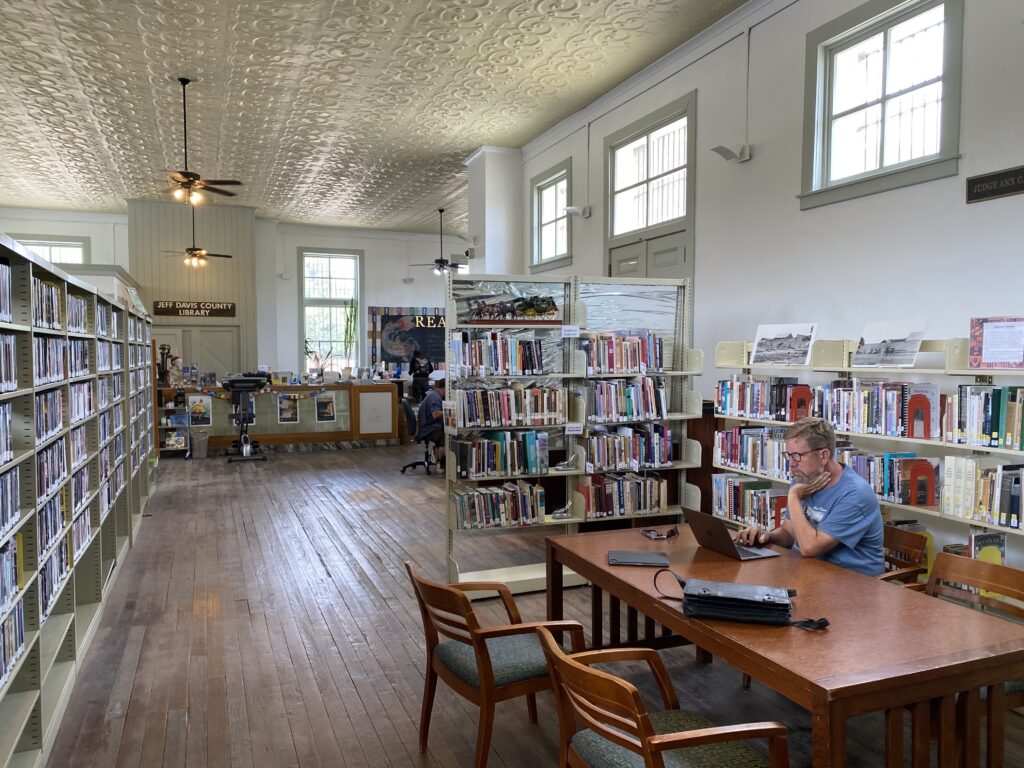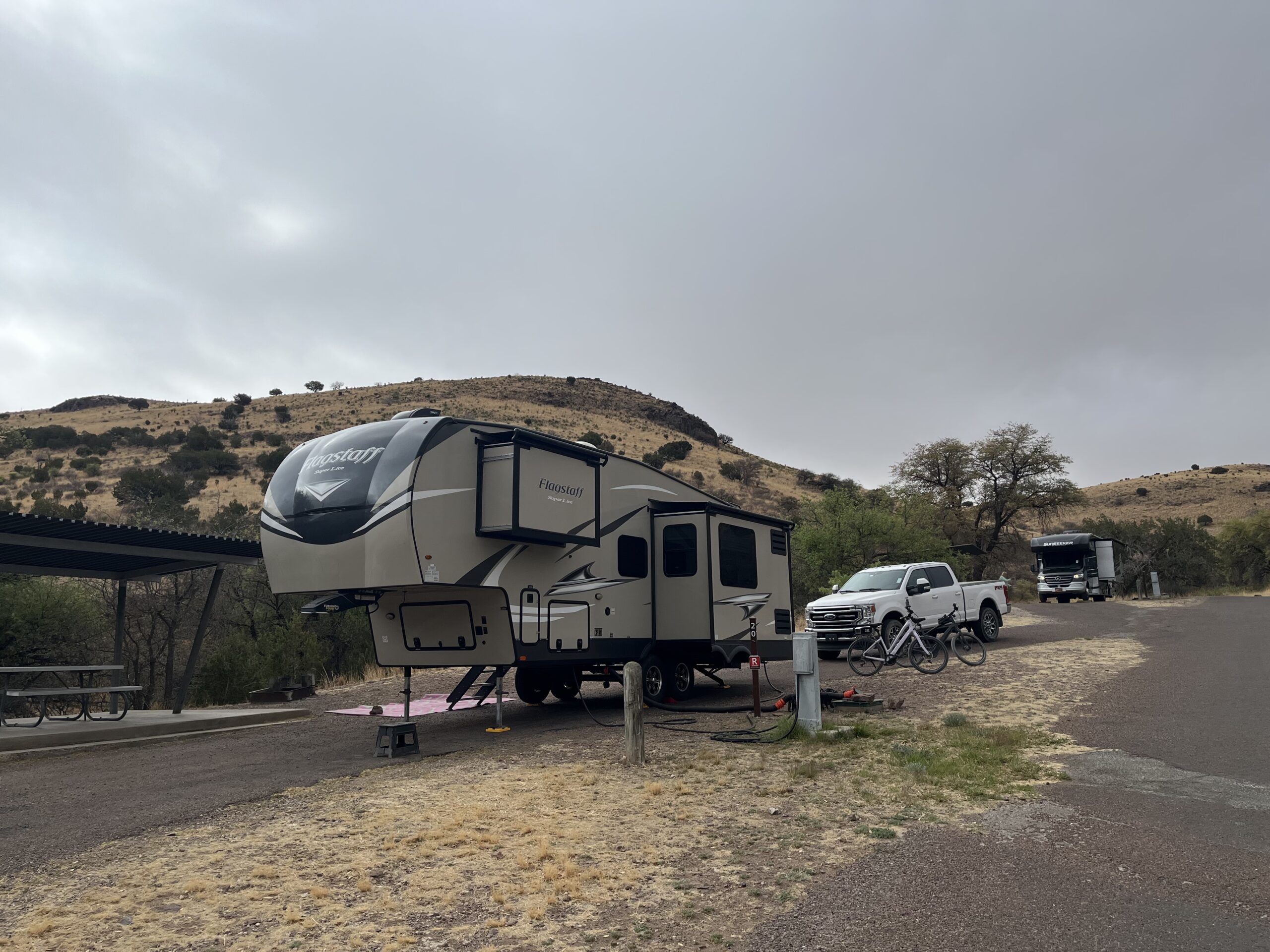If we didn’t have reservations in New Mexico, we might still be lost in West Texas. Despite the tough conditions in Big Bend, it was worth some heatstroke to immerse in nature’s extremes on the borderlands. Wrapping up in Marfa and Ft. Davis, these dusty arts and cowboy towns felt settling, even without pickleball, lettuce and e-bike supplies.
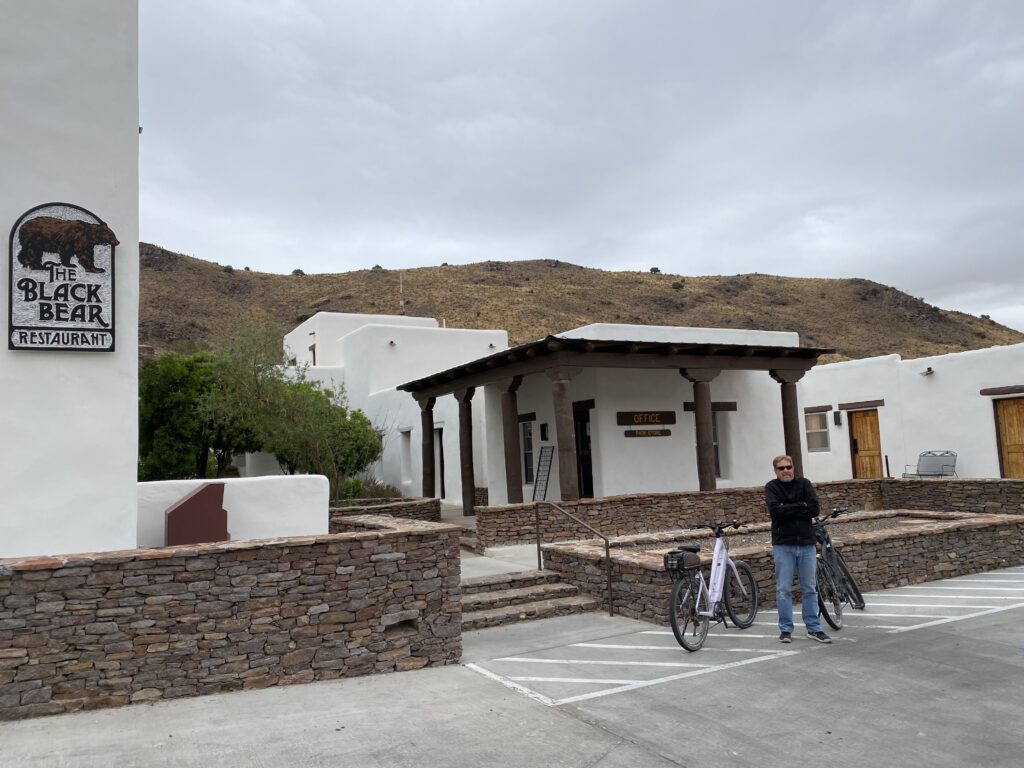
Small towns in West Texas get by on what they can get. Porter’s, the region’s grocer, stocks lots of cans, boxes and frozen, but the meat is aging badly, the produce shriveled and there’s no bakery at all. The thrift stores are flush with green glass and porcelain figurines while the tourist shops purvey pricey impractical western goods appealing to impulsive wallets who want to take home a piece of this West.
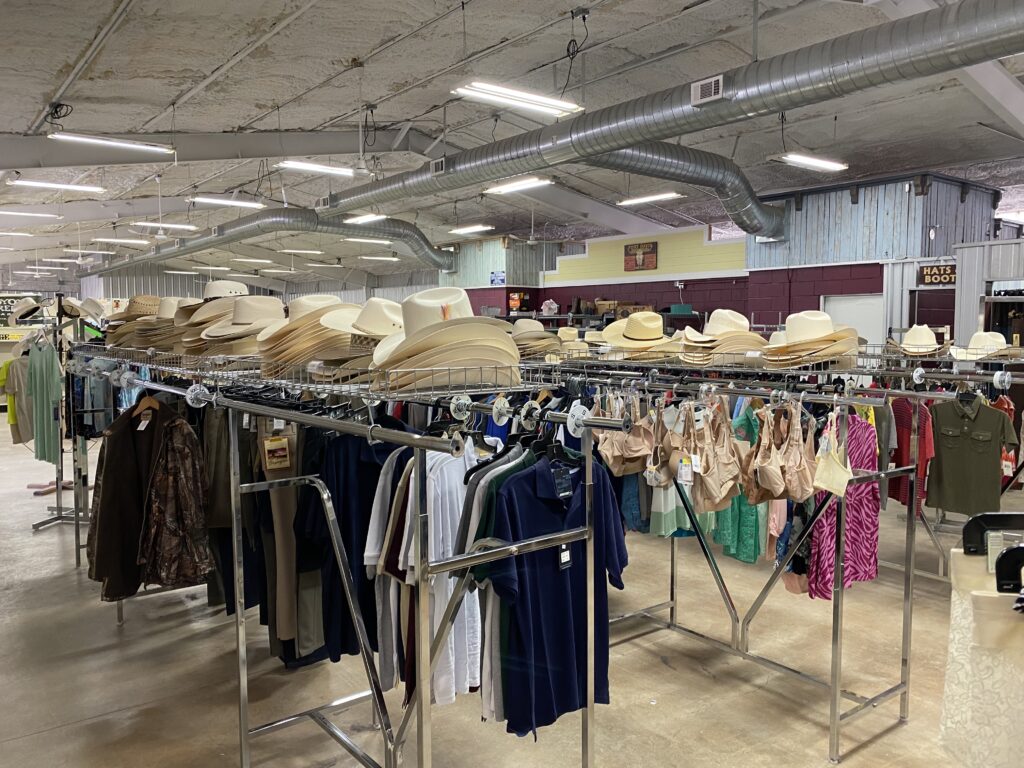
Leaving Marfa, we drove 22 miles down the road to Ft. Davis, the highest elevation town in Texas at 4,900 feet, which partially explains the temperature drop into the 50s and the scramble to find winter coats in Roxie. Amazing that 100 miles and 2,000 feet of elevation can cause a 60 degree temperature swing.
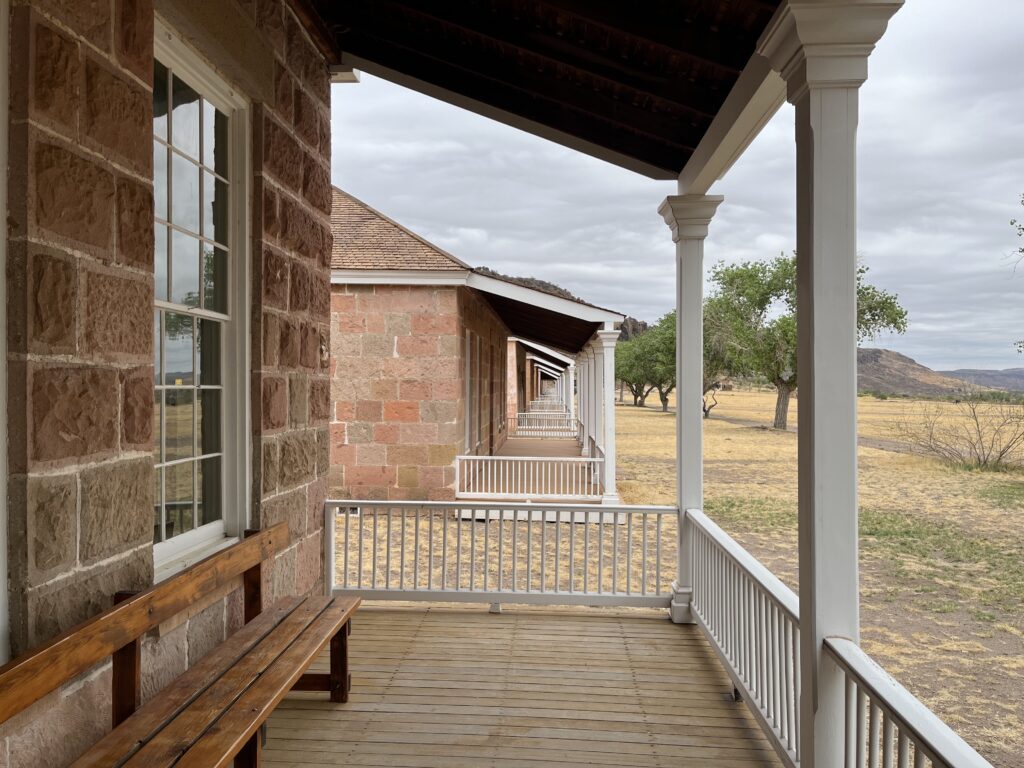
West Texas is complicated in its history. In Northern Virginia, the local government has renamed the Jefferson Davis Highway to the Richmond Highway. Civil War statues of Confederates are being taken down. But, in Fort Davis, TX, they are totally unapologetic about the past. In fact, we are typing this blog in the Jeff Davis County Library in the center of town. The former Army post, now a National Historic Site, for which the town and library was named celebrates Jefferson Davis who would become the President of the Confederate States of America.
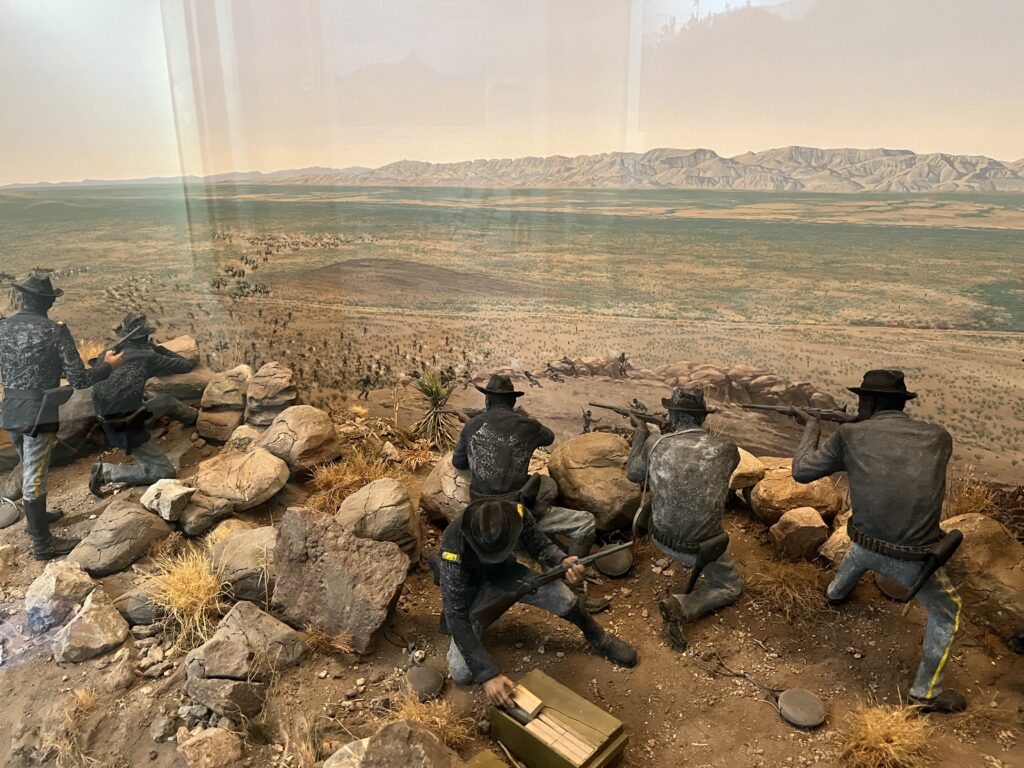
Fort Davis was founded at the height of the Indian Wars at a time when America’s expansion into the southwest was a bloody pitched battle against a constant flow of western moving settlers and the indigenous Indians who had lived on the land for centuries. Fort Davis was the most important western outpost ensuring that raiding Indian parties would be engaged and pushed onto reservations in Arizona. The National Park Service movie narrated by Kareen Abdul Jabar, is unabashedly proud of the Army’s role in eradicating the Kiowa, Comanche, and Apache from the Texas frontier. No hard feelings, the Fort Davis High School mascot is the fighting Indians. In truth, it is far more complicated than that. The most famous military units at Fort Davis were the famous African-American Buffalo Soldiers of the 9th Cavalry who were legendary in their battles with the Indians.
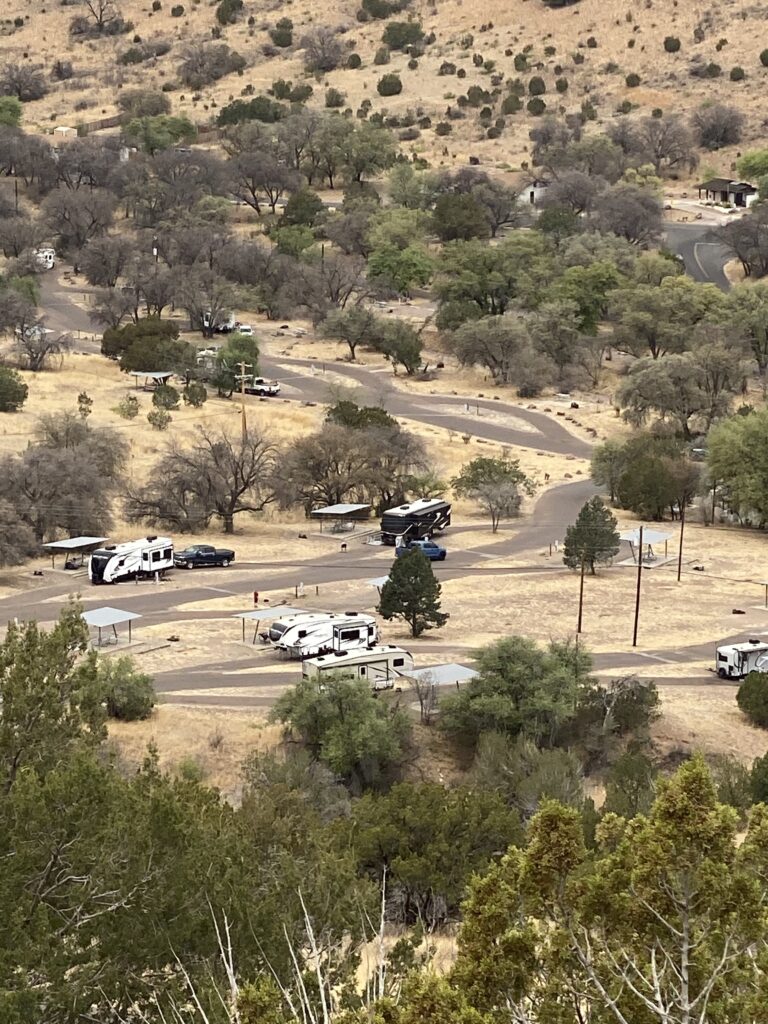
We are camping at the Davis Mountain State Park, a beautiful mountain campground built entirely by the Civilian Conservation Corps (CCC) during the Great Depression under President Franklin Roosevelt. The State Park presentation is equally proud of the role the CCC played in restoring jobs and dignity to a large population of unemployed American men during the bleakest economic times in US history. The campground is a shining example of spacious, natural, and scenic camping opportunity in America’s public parks made possible through a massive national social program.
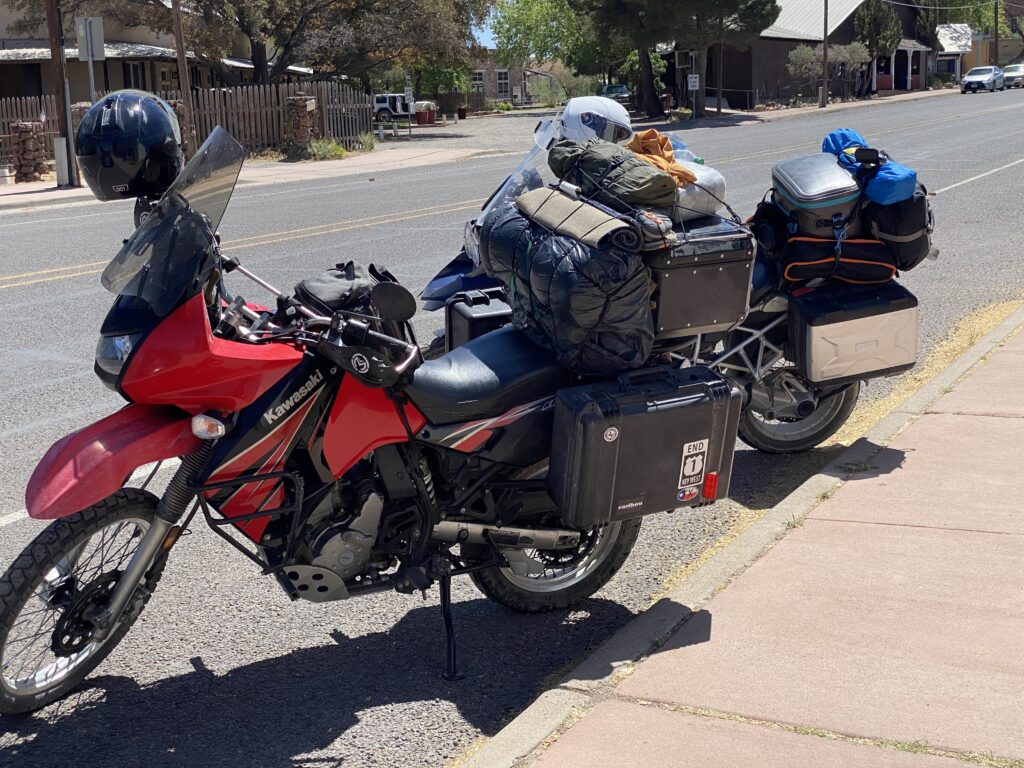
In West Texas, all of that history is part of the messy past that has made the United States, and especially Texas, so great today. No need to change a thing, many here say. That’s the great thing about travel throughout this country. You get to see it through so many different lenses.
